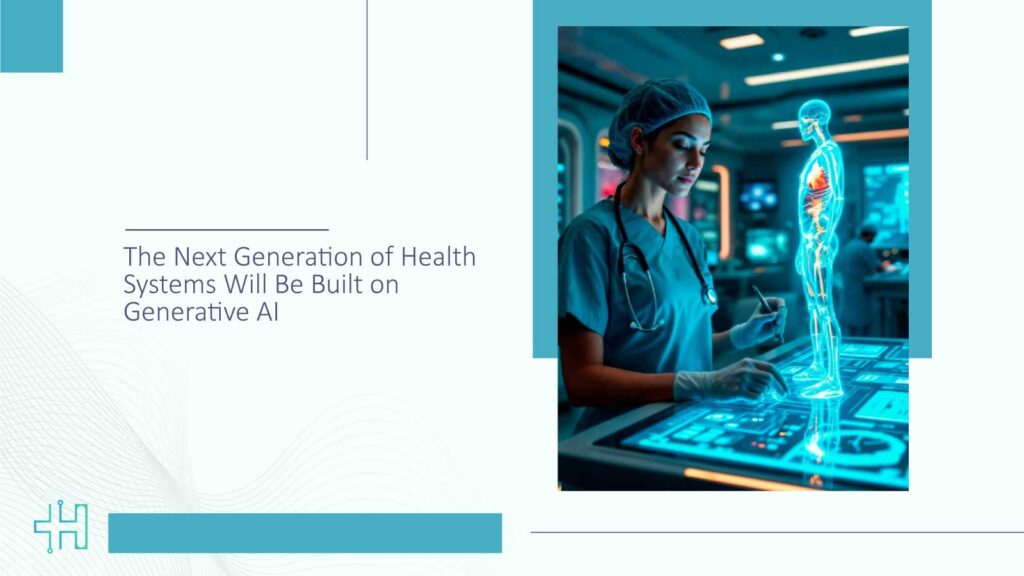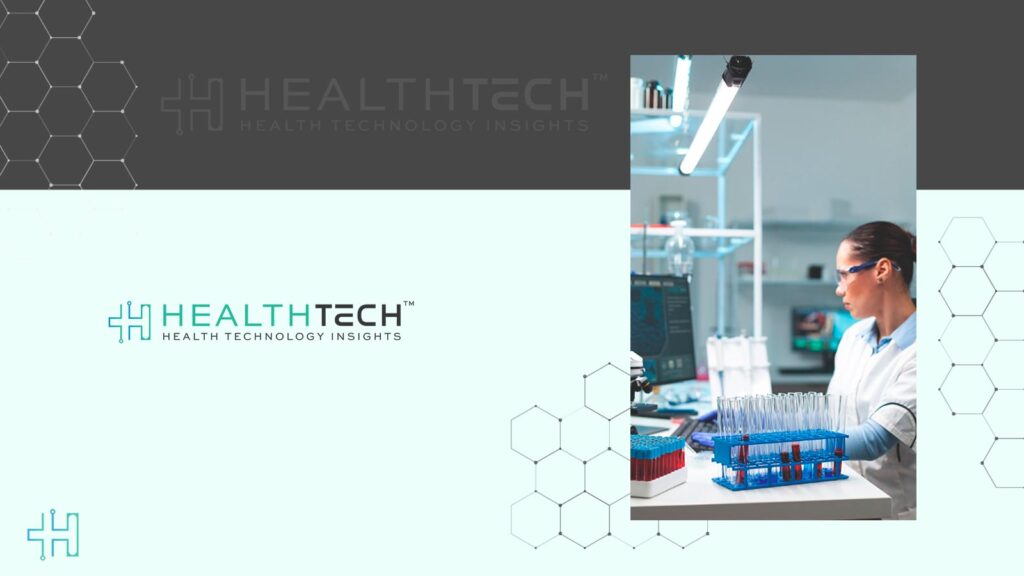Imagine a healthcare system where data drives better decisions, clinicians spend more time with patients, and paperwork disappears. Our focus keyword is “the promise of generative AI in health systems.”
This article explains how this technology is changing the healthcare system, increasing efficiency, and giving U.S. healthtech decision-makers more authority. The discussion blends recent research, real‑world case studies, and expert insights, all told in a conversational yet credible voice.
Why Generative AI Is Gaining Traction
As operational complexity grows and the demand for personalized care intensifies, health system leaders are turning to generative AI to streamline workflows, unlock insights, and elevate clinical outcomes. Here’s a closer look at how and why adoption is accelerating.
Broad Adoption Among Leaders
A McKinsey survey found that 85% of U.S. health system leaders were exploring or had adopted generative AI capabilities.
Meanwhile, a Gradient Flow/AHA survey found 65% of providers are actively considering or implementing generative AI solutions to address workflow inefficiencies and streamline operations.
Physician Readiness at the Point of Care
Recent data shows 40% of U.S. physicians are prepared to use generative AI directly with patients at point‑of‑care settings. That reflects growing comfort with AI‑driven support in clinical decision‑making.
Massive Industry Investment
According to Stanford’s 2025 AI Index report, global investment in generative AI topped $33.9 billion, an 18.7% increase from 2023. AI usage now spans 78% of organizations globally, up from 55% the prior year.
This funding fuels new tools tailored to healthcare settings.
What Does “Next Generation” Look Like in Practice?
When we talk about “next-generation” healthcare, it’s about real, measurable change happening in clinical environments today. From smarter workflows to AI-assisted care delivery, leading health systems are already redefining what’s possible. Here’s what that looks like in action.
Smart Clinical Documentation
Consider a mid‑sized U.S. hospital that integrated a generative AI triage and documentation tool into its Electronic Health Record. The tool analyzed symptoms, history, and vitals to prioritize high‑risk patients. Wait times shrank and clinician stress eased because nurses and doctors got real‑time support from AI itself, helping draft notes and suggestions. This is a transformative use of Generative AI in health systems.
AI‑Powered Drug Discovery
In pharmaceutical R&D, platforms like generative chemistry tools are accelerating compound design and clinical candidate selection. Firms like Terray Therapeutics and Superluminal Medicines are pioneering this space. These tools speed up timelines and improve decisions, all part of next‑gen health systems built on generative AI.
Enterprise‑Scale Deployment Shifts
Johnson & Johnson refined its generative AI strategy: instead of large centralized experimentation, it now focuses on high‑value applications in drug discovery, supply chain, and internal chatbot tools. Only 10–15% of use cases delivered 80% of the value, so they empowered domain teams to manage AI projects autonomously.
Industry Insights
“All the applications in our portfolio will ultimately have an AI model. It’s inevitable.” That’s the sentiment from Stanford Health Care leaders speaking at Arab Health 2024, noting predictive models reduce cognitive burden and drive real savings in revenue cycle workflows.
Mihaela van der Schaar, PhD, at Cambridge Centre for AI in Medicine: “The aim should be enabling humans to become better learners and decision‑makers.” That underscores the core of Generative AI in health systems as augmentation, not replacement.
AI in Healthcare
Ronald M. Razmi writes in AI Doctor: “AI is the solution, enhancing every stage of patient care… clinical practice will become more efficient, convenient, personalized, and effective.”
On ethics and oversight, the National Academy of Medicine stresses the need for collaboration, governance, and risk‑aware deployment of generative AI in health and medicine.
Benefits for Health System Leaders
As healthcare organizations explore AI adoption, a common question emerges: What does it look like in action?
The next generation of healthcare AI is already delivering impact, quietly, effectively, and in ways that directly support clinicians and patients. Let’s take a closer look at how this transformation is unfolding in real clinical settings.
Enhanced Clinical Workflows
Generative AI can automate documentation, synthesize medical literature, and even draft consult summaries, freeing clinicians to focus on patients.
Operational Speed and Accuracy
Revenue cycle, prior authorization, and staffing workflows benefit from generative AI bots. For example, Abridge’s platform reduced charting time by 74% in partner systems like Mayo Clinic and UNC Health.
Clinical Training and Education
Generative AI tools are enhancing medical education by offering personalized learning pathways, real‑time feedback, and virtual patient simulations. Programs like OpenEvidence show promise in training while reducing costs and broadening access.
User Experience and Consumer Trust
According to a consumer survey, 35% of Americans use AI for research, meal planning, and emotional support when it comes to their health and wellness. While 63% of people trust AI for health information, compared to 43% for social media, indicating comfort, doctors are still far more trusted (93%), according to nypost.com.
Frameworks for Ethics, Governance, and Trust
82% of healthcare organizations are putting governance frameworks surrounding generative AI into place, according to prominent corporations like Deloitte. Just as important as technological performance is ethics, openness, security, and bias reduction, according to Deloitte.
Risk Awareness
Experts emphasize that generative AI outputs must be carefully validated. The National Academies identify primary risks: privacy, bias, brittleness, and inappropriate output use, all of which demand structured oversight
Human‑In‑the‑Loop Assurance
Even OpenAI’s CEO Sam Altman remains cautious: despite noting AI often outperforms doctors diagnostically, he stresses trusting human oversight when it comes to critical medical decisions
Building Blocks for Next‑Gen Health Systems
Transforming AI from pilot projects into enterprise-wide impact requires more than ambition; it takes strategy, structure, and a scalable roadmap. Leading advisory models, like Deloitte’s, outline how healthcare organizations can go from experimentation to operational excellence.
Five Key Steps from Strategy to Scale
Here are five foundational steps every health system should consider on the journey from strategy to scale.
A Deloitte model advises health systems to:
- Infuse AI into the organization.
- Establish solid operational foundations.
- Build scalable infrastructure.
- Pilot and experiment thoughtfully.
- Move toward production‑grade solutions.
Workforce Readiness
Health systems should invest in AI fluency. Pharma giants like J&J, Merck, and Eli Lilly have launched generative AI training for tens of thousands of employees, shifting emphasis to AI literacy alongside biotech skills.
The AI‑Powered Clinician
Over the next 12‑24 months, the “AI‑Powered Clinician” will emerge as a new archetype: professionals who seamlessly collaborate with AI assistants during diagnosis, documentation, and patient interaction. They will draw on generative AI for fast evidence retrieval, draft summarization, and decision support while maintaining human empathy and critical thinking skills.
Smooth Transitions Matter
Without strong change management, even well‑built tools fail to deliver. Health system leaders must create cultures that encourage experimentation, psychological safety, and continuous iteration, as Scott Arnold, CIO at Tampa General Hospital, and others emphasize
Intelligent Healthcare Through Generative AI Innovation
Health systems powered by generative AI are no longer futuristic; they are rapidly emerging. Generative AI in health systems is the cornerstone of more intelligent, compassionate, and digitally native healthcare, from lowering administrative burden to accelerating diagnostics and opening up new R&D possibilities.
Those who carefully embrace AI, with governance, workforce readiness, and a patient-centered lens, will drive the next wave of innovation, in my opinion as a healthtech analyst with extensive industry knowledge. The future is about forming alliances that increase empathy, understanding, and influence rather than having to choose between people and machines.
FAQs
1. How will generative AI support clinicians without replacing them?
Generative AI handles routine tasks like documentation and literature review. Clinicians retain final judgment. The result: more time for direct patient care with reliable support in the background.
2. Is AI in health systems reliable and safe?
Yes, when deployed with governance frameworks. Many health systems are testing outputs, enforcing security, monitoring for bias, and ensuring human oversight.
3. What about patient trust in AI‑generated recommendations?
Trust improves when patients know a clinician reviews AI input. Surveys show people trust doctors most, but AI is gaining ground. Transparency matters.
4. Do health staff need special training to use generative AI tools?
Absolutely, many organizations now offer AI literacy programs. Skills include prompt crafting, interpreting outputs, and understanding limitations.
5. What comes next after implementing documentation and triage tools?
The next wave includes AI‑enhanced drug discovery, personalized treatment planning, and clinical simulation for education. This expands health systems into innovation hubs.
Dive deeper into the future of healthcare.
Keep reading on Health Technology Insights.
To participate in our interviews, please write to our HealthTech Media Room at sudipto@intentamplify.com




